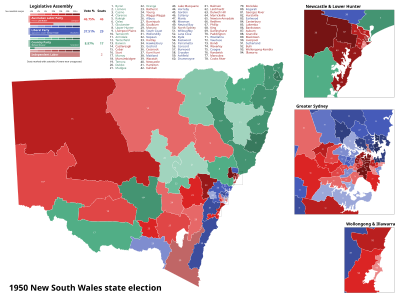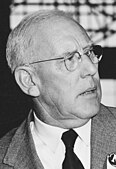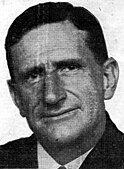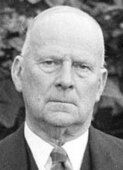| |||||||||||||||||||||||||||||||||||||||||||||||||
All 94 seats in the New South Wales Legislative Assembly 48 Assembly seats were needed for a majority | |||||||||||||||||||||||||||||||||||||||||||||||||
|---|---|---|---|---|---|---|---|---|---|---|---|---|---|---|---|---|---|---|---|---|---|---|---|---|---|---|---|---|---|---|---|---|---|---|---|---|---|---|---|---|---|---|---|---|---|---|---|---|---|
| Registered | 1,919,479 | ||||||||||||||||||||||||||||||||||||||||||||||||
| Turnout | 1,611,349 (92.75%) ( | ||||||||||||||||||||||||||||||||||||||||||||||||
| |||||||||||||||||||||||||||||||||||||||||||||||||
 Two-candidate-preferred margin by electorate | |||||||||||||||||||||||||||||||||||||||||||||||||
| |||||||||||||||||||||||||||||||||||||||||||||||||
The 1950 New South Wales state election was held on 17 June 1950. It was conducted in single member constituencies with compulsory preferential voting and was held on boundaries created at a 1949 redistribution. The election was for all of the 94 seats in the Legislative Assembly, which was an increase of 4 seats since the previous election.
At the time of the election, Labor had been in power for 9 years, Jim McGirr had been the Premier for 3 years and Labor had lost power federally to the Liberal Party of Robert Menzies 6 months earlier. The NSW Labor Government, under McGirr, was beginning to show signs of age. Severe divisions had appeared in the party at the beginning of 1950 when the state executive expelled 4 members of the Assembly James Geraghty (North Sydney), John Seiffert (Monaro), Roy Heferen (Barwon) and Fred Stanley (Lakemba) from the parliamentary party for breaking party solidarity during the 1949 indirect election of the Legislative Council. They had apparently voted for Bill McNamara who was 9th on the Labor ticket.[1] All four served out the remainder of their terms as independents and stood in the election as Independent Labor candidates. An attempt by the caucus to overturn the expulsions led to resentment among party branch members which was reflected in the pre-selection defeat of four members who were standing for re-election; Baden Powell, Bob Gorman, Mary Quirk and Kevin Dwyer.[2] Two members of Lang Labor: Chris Lang (Auburn) and Lilian Fowler (Newtown) were still in the Assembly and they both stood for re-election.
In contrast, the Liberal Party, which had been founded by in 1945, continued to consolidate its position as the pre-eminent conservative party. It was led by Vernon Treatt and presented a solid front to the electorate. The Liberals had won three seats from Labor at by-elections for Concord, Coogee and Kogarah.[3] The Country Party was led by Michael Bruxner and remained closely aligned to the Liberals.
Key dates
[edit]| Date | Event |
|---|---|
| 22 May 1950 | The Legislative Assembly was dissolved, and writs were issued by the Governor to proceed with an election. |
| 22 May 1950 | Nominations for candidates for the election closed at noon. |
| 17 June 1950 | Polling day. |
| 30 June 1950 | Third McGirr ministry sworn in. |
| 19 July 1950 | Last day for the writs to be returned and the results formally declared. |
| 12 July 1950 | Opening of 36th Parliament. |
Results
[edit]The result of the election was a hung parliament. The balance of power lay with the two re-elected Independent Labor members, James Geraghty and John Seiffert, who had been expelled from the party for disloyalty during the previous parliament. As Seiffert had not stood against an endorsed Labor candidate for Monaro, he was readmitted to the party and together with the support of Geraghty, McGirr and Labor were able to stay in power. Labor gained the two Lang Labor seats. Of the other two seats held by expelled members, Labor re-gained Lakemba while the Country Party won Barwon. Labor also lost Hawkesbury to the Liberal Party and Mudgee and Dubbo to the Country Party. The sitting Independent members for South Coast and Gloucester had joined the Liberal Party and the Country Party respectively prior to this election. During the parliament there were 4 by-elections with the result of a net gain to Labor of 1 seat (Ashfield).
The near loss of the election weakened McGirr's position and he was replaced as premier by Joseph Cahill in April 1952. Treatt remained the Leader of the Opposition during the period of this parliament and Bruxner continued as the Leader of the Country Party, a position he had held since 1932.
|
New South Wales state election, 17 June 1950 | ||||||
|---|---|---|---|---|---|---|
| Enrolled voters | 1,919,479[a] | |||||
| Votes cast | 1,611,349 | Turnout | 92.75 | −1,86 | ||
| Informal votes | 28,964 | Informal | 1.77 | −0.22 | ||
| Summary of votes by party | ||||||
| Party | Primary votes | % | Swing | Seats | Change | |
| Labor | 753,268 | 46.75 | +0.8 | 46 | −6 | |
| Liberal | 604,428 | 37.51 | +5.8 | 29 | +10 | |
| Country | 144,573 | 8.97 | −1.3 | 17 | +2 | |
| Independent | 37,229 | 2.31 | −3.6 | 0 | −2 | |
| Independent Labor | 26,596 | 1.65 | +0.8 | 2 | +2 | |
| Lang Labor | 19,683 | 1.22 | −2.8 | 0 | −2 | |
| Communist | 13,589 | 0.84 | −0.9 | 0 | 0 | |
| Independent Country | 6,445 | 0.40 | +0.40 | 0 | 0 | |
| Independent Liberal | 5,538 | 0.34 | −0.2 | 0 | 0 | |
| Total | 1,611,349 | 94 | ||||
The final two party preferred result was Labor 51% to Coalition 49%.[citation needed]
Retiring members
[edit]Labor
[edit]- Bill Dunn (Mudgee)
- Kevin Dwyer (Redfern) — lost preselection
- Bob Gorman (Annandale) — lost preselection for Newtown-Annandale
- Baden Powell (Wollongong-Kembla) — lost preselection
Seats changing party representation
[edit]See also
[edit]- Candidates of the 1950 New South Wales state election
- Members of the New South Wales Legislative Assembly, 1950–1953
Notes
[edit]- ^ There were 1,768,801 enrolled voters in 86 contested electorates and 150,878 were enrolled in 8 uncontested electorates (5 Country, 2 Liberal and 1 Labor).[4]
- ^ Roy Heferen had been expelled from Labor as a result of voting against the party ticket in the 1949 election for the Legislative Council and contested the seat as an independent labor candidate.
- ^ Burrinjuck was a new seat, largely replacing Yass, held by Labor (Bill Sheahan).
- ^ Collaroy was a notional Liberal seat created out of the districts of Hornsby and Manly, both of which were held by the Liberal party.
- ^ Concord was won by the Liberal Party at a by-election in 1949 caused by the death of Labor's Bill Carlton.[3]
- ^ Coogee was won by the Liberal Party at a by-election in 1948 caused by the death of Labor's Lou Cunningham.[3]
- ^ a b c d e New seat notionally Labor.
- ^ a b c New seat notionally Liberal.
- ^ The redistribution made Hawkesbury a notional Liberal seat.
- ^ Kogarah was won by the Liberal Party at a by-election in 1948 caused by the death of Labor's William Currey.[3]
- ^ Maroubra was a new seat, largely replacing Botany, held by Labor (Bob Heffron).
References
[edit]- ^ "Abolition move unlikely". The Sydney Morning Herald. 2 April 1949. p. 3. Retrieved 5 December 2020 – via Trove.
- ^ "Defeat of five members in pre-selection". Sun Herald. 12 March 1950. Retrieved 11 January 2009 – via Trove.
- ^ a b c d Green, Antony. "By-elections 1947−1950". New South Wales Election Results 1856-2007. Parliament of New South Wales. Retrieved 9 December 2021.
- ^ Green, Antony. "1950 election totals". New South Wales Election Results 1856-2007. Parliament of New South Wales. Retrieved 9 August 2019.


